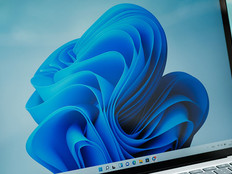How Windows 8 Will Work for Business
When it comes to its next operating system, Microsoft has not been shy about taking bold steps with reimagined workflows and user interfaces. Its Metro style UI, which is optimized for touch and tablet use, has wowed the masses with its tile-based, visuals-first design. But Microsoft is not leaving behind enterprise users.
As an OS that’s designed to serve both the tablet and the desktop, Microsoft calls its dual-interface wielding Windows 8 OS a “no compromises” solution, since it grants users the flexibility of switching to the traditional desktop interface or the Metro style interface with ease.
Erwin Visser, a senior director of the Windows Commercial business group, took to the Windows blog to sum up a few key features that will be available to businesses in Windows 8:
Imagine if you didn’t have to choose between convenience and productivity on your tablet.
I hear a lot of people say they feel they have to choose between the productivity of a PC and the convenience of a tablet. Our goal is to offer a “no compromise” solution so you don’t have to choose between productivity and convenience. With the new Metro style interface in Windows 8, users get an experience built for touch that also works beautifully with a mouse and keyboard. It’s deeply personalized, fast and fluid. You can use all of your existing Windows 7 productivity and line of business applications, and you can leverage your existing infrastructure to manage, secure and support Windows 8 tablets.
Imagine if you could put your secure corporate PC in your pocket.
As we talked about last week with the availability of Windows 8 Consumer Preview, IT departments can provision Windows To Go, a fully managed corporate Windows 8 desktop on an external USB Drive that a user can boot from any PC available at work, at home, or just about any location, with or without connectivity. It’s like having your secure corporate PC in your pocket. And this means employees will be able to do things like travel light without sacrificing productivity, IT organizations can support the “Bring Your Own PC” trend, and businesses can give contingent staff access to the corporate environment without compromising security.
Every time I talk with customers about Windows To Go, a new scenario comes up, like how it will be helpful in situations like working from home or vacation and disaster recovery, and we expect it will be highly valuable for certain industries like military or education. I’m excited to hear how Windows To Go will be used within your organization because I truly believe it will give businesses an array of new possibilities in mobile productivity.
Imagine security from the moment you boot.
From power-on to power-off, Windows 8 provides a more secure foundation no matter where you choose to work. With features like Trusted Boot, Measured Boot Process, BitLocker Drive Encryption, AppLocker, and claim-based access control, Windows 8 delivers end-to-end security like never before.
One of my favorite new security features in Windows 8 is Trusted Boot. The Windows 8 boot process is signed and measured, helping to protect the PC from malware or viruses. Trusted Boot validates the integrity of the entire boot process, including the hardware, boot loader, kernel, boot-related system files, and drivers. Antimalware is loaded in advance of all non-critical Windows components. This means that malware, such as rootkits, are less able to hijack the boot process or hide from antimalware software.
Imagine a virtualized environment that feels like a rich client experience.
We’ve seen many enterprise organizations consider Virtual Desktop Infrastructures (VDI) to help centrally manage thin client machines — giving end users the anywhere access they need and a familiar desktop experience, while simultaneously heightening data security throughout their organization. However, there have been some barriers to VDI adoption — either concern that the user experience will not meet expectations, that it’s difficult to implement or that the storage is too costly. With Windows 8, VDI is reimagined to offer more and address those concerns. Users will be able to get a virtualized experience that feels like a rich client experience, with things like high-definition graphics fully responsive to touch, along with high performance and support for local USB devices. Additionally, IT will be able to implement VDI infrastructures that are more cost-effective and easier to manage.
Also, check out this video from Microsoft showing off Windows 8 for businesses.
For more on Windows 8 for business, read Visser’s full post on the Windows blog. And for more great content from around the web, check out BizTech's 50 Must-Read IT Blogs.








